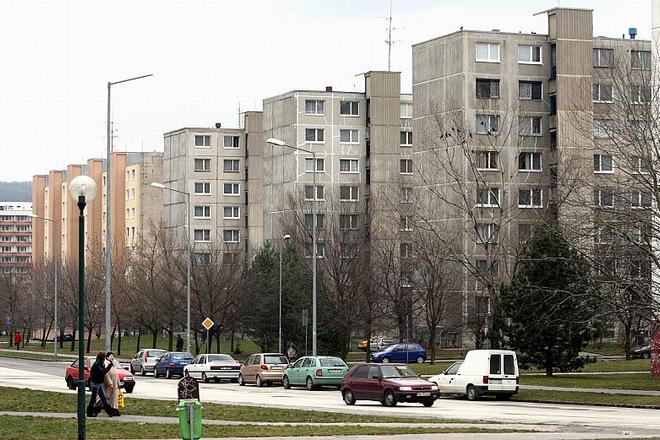MANY concrete panel apartment houses - or paneláks - built as state housing in Slovakia during communism, will need extensive repairs to avoid dilapidation in the next 10 years.
When calculating costs for the reconstruction of an older apartment, not just the bill for new floor-tiles, windows or paint must be taken into account. The paneláks constructed in the second half of the last century have a remaining lifespan of only a few decades. To avoid having to demolish them, hundreds of billions crowns will have to be invested, Hospodárske Noviny wrote.
The Construction Ministry has calculated the total investment required in neglected apartments at approximately Sk400 billion (€13.28 billion), said Miroslav Bátovský, a spokesman for the ministry. Part of the money may be paid by the state or from European Union funds, but residents will also have to pay at least some of the costs.
In Slovakia, there are more than 600,000 apartments in concrete panel houses built mainly during communism, which amounts to about one third of the total number of flats in Slovakia. The first concrete panel house was built in Slovakia in 1955, in Kmeťovo Square in the centre of Bratislava. The following years saw a boom in their construction and some have now been standing for 50 years. Many are in a poor state.
Experts point out that in the past, necessary maintenance was often forgotten and repairs were delayed. Residents themselves have also contributed to their demise by, for example, by allowing water leaks to flood neighbouring flats and thereby increasing the probability of corrosion of the ferro-concrete structure of the building.
The lifespan of concrete panel apartment houses is estimated to be 80 years. It can be enhanced through various maintenance schemes but approximately 20 years has to be deducted from the lifespan of badly maintained houses or as a result of weather impact. Thus, the first concrete houses may no longer be habitable within the next decade.
This doesn’t mean the buildings will collapse once their design lifespan expires. The supporting structures have, in fact, been proven to have a substantially longer lifespan, said František Hájek, associate professor at the Construction School of the Slovak Technical University in Bratislava.
The most frequent flaws include corrosion of the metal parts of buildings, cracks in the exterior walls, and leaks between and through the concrete panels. Roofs are frequently long overdue for replacement, and bathroom units, windows, piping and other apartment infrastructure is often very old.
According to Zuzana Sternová of the Research-Development Institute of Building Construction-Nova (VVÚPS-Nova), the plumbing and wiring have a limited lifespan. This is made mainly of aluminium, and not of safer, but more expensive, copper. “It should be renewed every 40 years at least,” Sternová said.
So far, few firms offer reconstruction of concrete apartment buildings but a boom can be expected in the coming years. A new lining for buildings is currently the most effective measure to maintain concrete panel houses. As its basic function is to reduce heating costs, it is colloquially called insulation. “However, it also protects the surface from direct effects of weather”, Hájek explained.
It is already clear that a complete renovation of concrete panel housing estates will cost hundreds of billions of crowns. According to the VVÚPS-Nova, costs for total reconstruction of one apartment are about Sk500,000 to Sk700,000 on average, including a share of the costs of lift replacement for the entire building.



 As much as 89.3 percent of the Slovakia's population live in their own flat or house. (source: Sme - Pavol Funtál)
As much as 89.3 percent of the Slovakia's population live in their own flat or house. (source: Sme - Pavol Funtál)